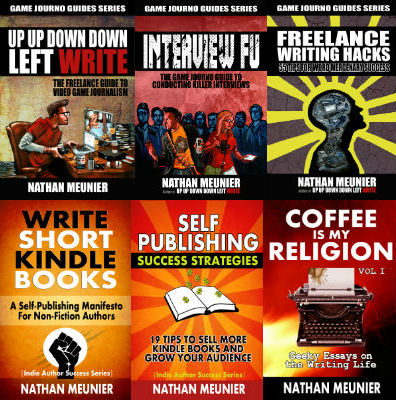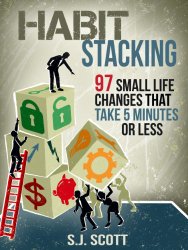6 Ways You Can Re-Purpose Your Content

Case Study: Nathan Meunier Profits With Low Budget Kindle Publishing

Case Study: Steve Scott Focuses First on List Building
Re-purposing content is one of the most powerful things you can do. It’s easy, takes less time than creating original content, and it can pay off in powerful ways. The biggest benefit to re-purposing content is you get it in front of an entirely different audience.
Here are 6 powerful ways to re-purpose content so that you reach different segments of your audience at different times in ways that they can more easily digest.
1) Turn It Into a Video
Since YouTube is the second largest search engine on the Web, it makes sense to turn your text-based content into a video. Whether it’s an article, a graphic, a blog post, a case study, or an e-book, you can turn it into a video with very little fanfare.
Of course, there is the cost of video production. With today’s technology, it’s not hard to produce a self-made video and post it to YouTube in one day. Here’s what you need:
- A good camcorder
- Video editing software
- A YouTube account
- The time and energy to make it happen
 Most computer systems today come with video editing software, and many come with a camcorder. Most mobile devices today have built-in cameras that will also record video. You can get yourself a selfie stick, hold your cell phone out at arm’s length and talk into the camera. If you can’t speak off the cuff, have a friend hold your article in front of you (out of view of the camera) and read it, but you should practice your acting skills so you can sound like you aren’t reading.
Most computer systems today come with video editing software, and many come with a camcorder. Most mobile devices today have built-in cameras that will also record video. You can get yourself a selfie stick, hold your cell phone out at arm’s length and talk into the camera. If you can’t speak off the cuff, have a friend hold your article in front of you (out of view of the camera) and read it, but you should practice your acting skills so you can sound like you aren’t reading.
Allergic to selfie sticks? No problem, sit at your desk and stare into the fish eye on your laptop or desktop computer. A camera’s a camera.
If doing your own videos is a little too scary for you, you can always spend the money on a professional video crew. That’s more expensive and will eat into your budget, but if you have the money and can make it pay off, videos are a great way to re-purpose your content. When you’re done, post it to YouTube, Vine, or your own blog even.
2) Make an Infographic
Graphics are powerful communication tools.
3) Turn It Into an E-book or Downloadable Report
 Some people call these lead magnets. You create a white paper, a special report, an e-book, or simply a one-page PDF document and make it available on your website as a free download. This allows you to capture e-mail addresses that you can use for future marketing.
Some people call these lead magnets. You create a white paper, a special report, an e-book, or simply a one-page PDF document and make it available on your website as a free download. This allows you to capture e-mail addresses that you can use for future marketing.
Another rendition of this number is to take your content and turn it into an e-book that you can sell. Some successful authors have simply taken old blog posts, packaged them as a Kindle book, and sold them on Amazon. Price it right and market it well and you have a secondary source of income. Plus, you position yourself as an authority in your niche. I like to think of Amazon’s marketing machine as another lead generation channel.
Amazon isn’t the only place online to sell e-books, however. In my book, “E-book Publishing: Create Your Own Brand of Digital Books,” I go into great detail about all the different places online you can distribute your self-published e-books.
4) Put It In Your Newsletter
 The great thing about newsletters is they only go out to your subscribers. If you take an old blog post that isn’t getting traffic any more, you can turn it into a newsletter article. Update the information to make it current and publish it in your newsletter.
The great thing about newsletters is they only go out to your subscribers. If you take an old blog post that isn’t getting traffic any more, you can turn it into a newsletter article. Update the information to make it current and publish it in your newsletter.
Another way re-purposed content in your newsletter benefits you is the fact that search engines can’t reach it. You can re-publish your content without worrying about that duplicate content thing (which isn’t that big of a deal anyway). Since Google doesn’t crawl newsletter content, unless it’s published on the Web, duplicate content isn’t an issue. You’re publishing it for the content value anyway, so don’t sweat it.
In The Content Letter, I sometimes re-publish my own content, but the main purpose is to curate the great content of others that I find during the week.
5) Podcast It
 Admittedly, this is a variation of the YouTube re-purposing plan. Instead of making a video of your content, make a podcast. You need everything necessary for a video production with one exception: Replace camcorder with microphone. Make sure it’s a high quality microphone.
Admittedly, this is a variation of the YouTube re-purposing plan. Instead of making a video of your content, make a podcast. You need everything necessary for a video production with one exception: Replace camcorder with microphone. Make sure it’s a high quality microphone.
Oh, and instead of video editing software, you need audio editing software. I recommend Audacity.
If you publish a lot of textual content, or even video content, you can turn it into a regular podcast, increase your traffic, and make yourself a recognized authority in your niche.
6) Re-Publish It Elsewhere
A lot is made about duplicate content in search engine optimization circles. The truth is, it’s not that big a deal. If you publish your content for the audience rather than for the search engines, then you can re-publish it any number of times as long as you are reaching an audience segment that makes sense for your business.
 You might want to consider whether or not you are duplicating your audience. In other words, have you published the same material recently targeting the same audience? If so, maybe that’s your problem. The exception might be when you have an opportunity to reach a larger audience. For instance, you first published the content on your blog with a total monthly unique visitor count of 1,000 and you have an opportunity to re-publish the content to an audience of 200,000. There’s a big potential pay off there.
You might want to consider whether or not you are duplicating your audience. In other words, have you published the same material recently targeting the same audience? If so, maybe that’s your problem. The exception might be when you have an opportunity to reach a larger audience. For instance, you first published the content on your blog with a total monthly unique visitor count of 1,000 and you have an opportunity to re-publish the content to an audience of 200,000. There’s a big potential pay off there.
Also, don’t just think in terms of online publishing here. You can take a blog post and turn it into a magazine article–as long as the magazine you are selling it to publishes reprints. Many do. Some don’t.
So, how many different places can you re-publish old content? Let’s take a look:
- LinkedIn – I have on several occasions taken blog posts and re-published them on my LinkedIn Pulse blog. You can too. Of course, you can do the reverse, too.
- Google+ – Google+ loves long-form content. You can re-publish articles from your blog to Google+ or vice-versa, re-publish from LinkedIn, or from print to Google+. Get creative.
- Digital Magazines – Many magazines are now publishing in the digital format. You can take your previously published articles and submit them to digital magazines, or you can publish first in the magazine and re-publish on your own blog.
- Print Magazines – By the same token, you can cross-publish to and from print magazines.
- Trade Journals – Is there a trade journal that services your industry? If you look real hard, I bet you’ll find one. Publish your content in the trade journal first then to your blog or other venue. If the trade journal takes reprints, you can publish first somewhere else.
- Other Blogs – Most bloggers these days want original content. I don’t blame them. But some still will publish reprints if you bring value to their audience.
- Syndication – So far, we’ve talked a lot about text-based content, but there’s nothing that says you can’t syndicate your video or audio content (or text-based content, for that matter). Ever hear of Dave Barry, Rush Limbaugh, or Jerry Seinfeld? One is a syndicated columnist in the print format, one is a syndicated radio jock, and the other a TV personality with a syndicated sitcom. You can do the same thing with your articles, videos, and podcasts.
The list of publishing platforms is growing all the time, especially on the World Wide Web. There is no shortage of podcast publishing platforms, video upload communities, blogs, or places to publish your content.
All content is omni-directional, meaning you can publish it in a variety of media, through multiple channels, and re-purpose it from one mode into another at ease. Video content can become text-based just as easily as text-based content can be made into video. A podcast can be turned into an infographic, an infographic can be translated into a newsletter article, and an e-book or downloadable report can be published in a trade journal or a magazine.
No matter what kind of content you have, it can be re-published and re-purposed. That includes white papers and case studies.
How Are You Re-Purposing Your Content?
Now that you have several different ways to re-purpose your content, let’s talk about whether you should or not.
Content re-purposing should not be taken lightly. If you have no reason to do it, then don’t. The main reason publishers and authors re-purpose content is so they can reach a different audience. For instance, if one of your audience segments is college-educated females and another consists of business professionals who earn $100,000 or more per year, then you can take a piece of content targeted toward one of those audiences and re-purpose it to target the other.
Most of the time, re-purposing consists of revising. An article intended for young females may not be suited to older professional men in its current state. Both audiences likely speak different languages. They may use different terminology or have a different attitude about your topic. You’ll need to consider that.
When it comes to content re-purposing, it’s a powerful way to distribute your best content if done right. And if you’re going to do it, you might as well do it right.


